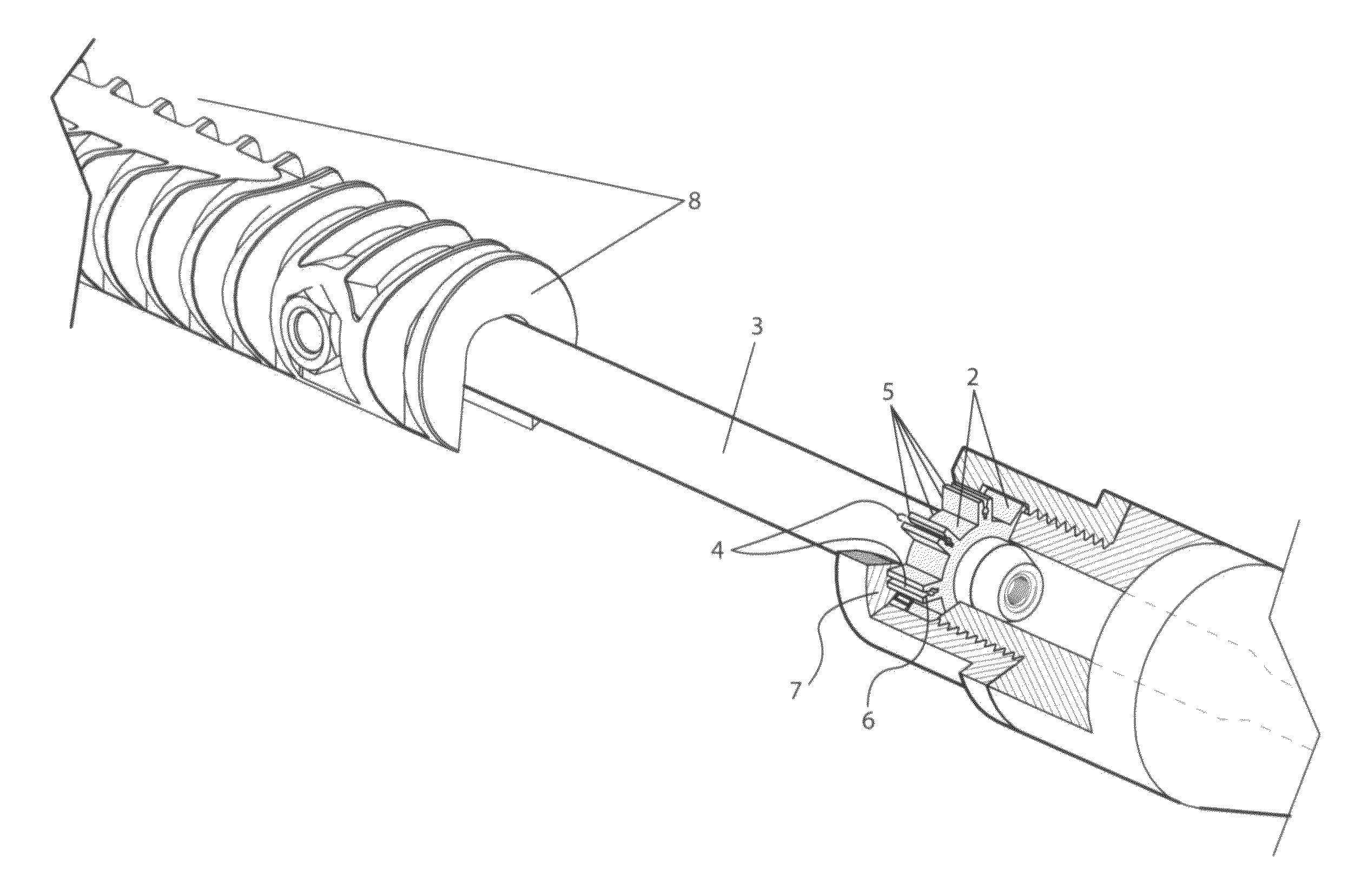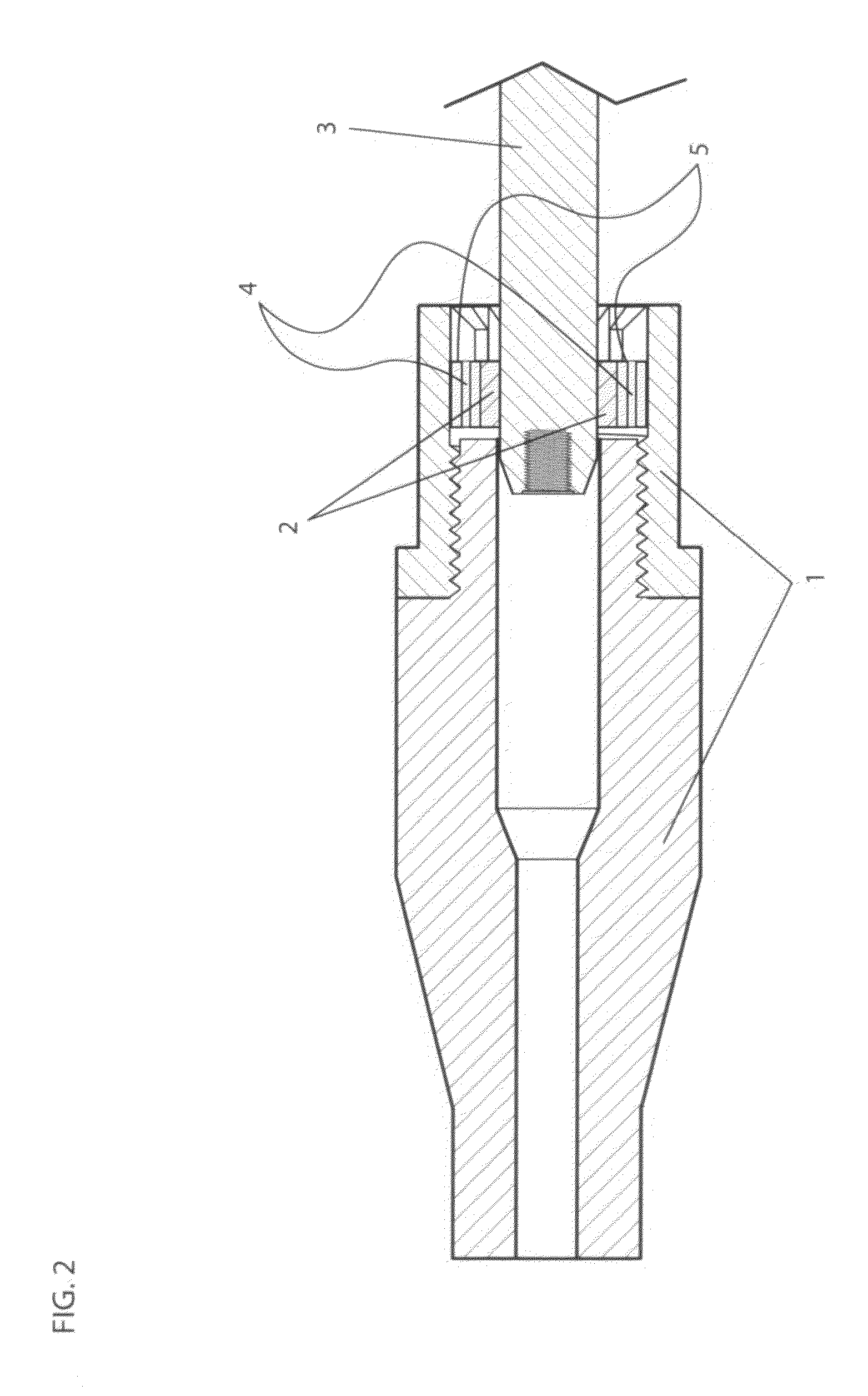Rifle chamber cleaning tool with debris capturing recesses
a cleaning tool and debris technology, applied in the direction of hollow object cleaning, hair combs, mechanical equipment, etc., can solve the problems of inoperable firearms, inconvenient cleaning of firing chambers of all types of firearms, contamination and fouling of firing chambers, etc., to achieve safe and faster method of debris removal and rapid debris removal
- Summary
- Abstract
- Description
- Claims
- Application Information
AI Technical Summary
Benefits of technology
Problems solved by technology
Method used
Image
Examples
Embodiment Construction
[0039]FIG. 1 shows a rear facing view of the annular main body of the scraping head with elongated fingers (2). The scraping head (2) is preferably comprised of any suitable and durable material, including, but not limited to, metal and plastic. The scraping head (2) can be formed through various industrial processes such as water-jet cutting, laser jet cutting, investment casting, injection molding or wire (EDM) electrode discharge machining. The scraping head (2) is then permanently affixed, by pinning, set screws, welding, soldering, or other means, to the tool shaft (3) so that it cannot become “unthreaded” and left inside the rifle chamber, rendering the firearm inoperable. The debri capturing chamber (4) is formed by two opposing scraping edges within the elongated fingers of the scraping head. (2) Two opposed angled scraping edges (6) form the narrow entrance of the debris capturing chamber. Depending upon the method of manufacture, the debris capturing chambers, which face r...
PUM
 Login to View More
Login to View More Abstract
Description
Claims
Application Information
 Login to View More
Login to View More - R&D
- Intellectual Property
- Life Sciences
- Materials
- Tech Scout
- Unparalleled Data Quality
- Higher Quality Content
- 60% Fewer Hallucinations
Browse by: Latest US Patents, China's latest patents, Technical Efficacy Thesaurus, Application Domain, Technology Topic, Popular Technical Reports.
© 2025 PatSnap. All rights reserved.Legal|Privacy policy|Modern Slavery Act Transparency Statement|Sitemap|About US| Contact US: help@patsnap.com



